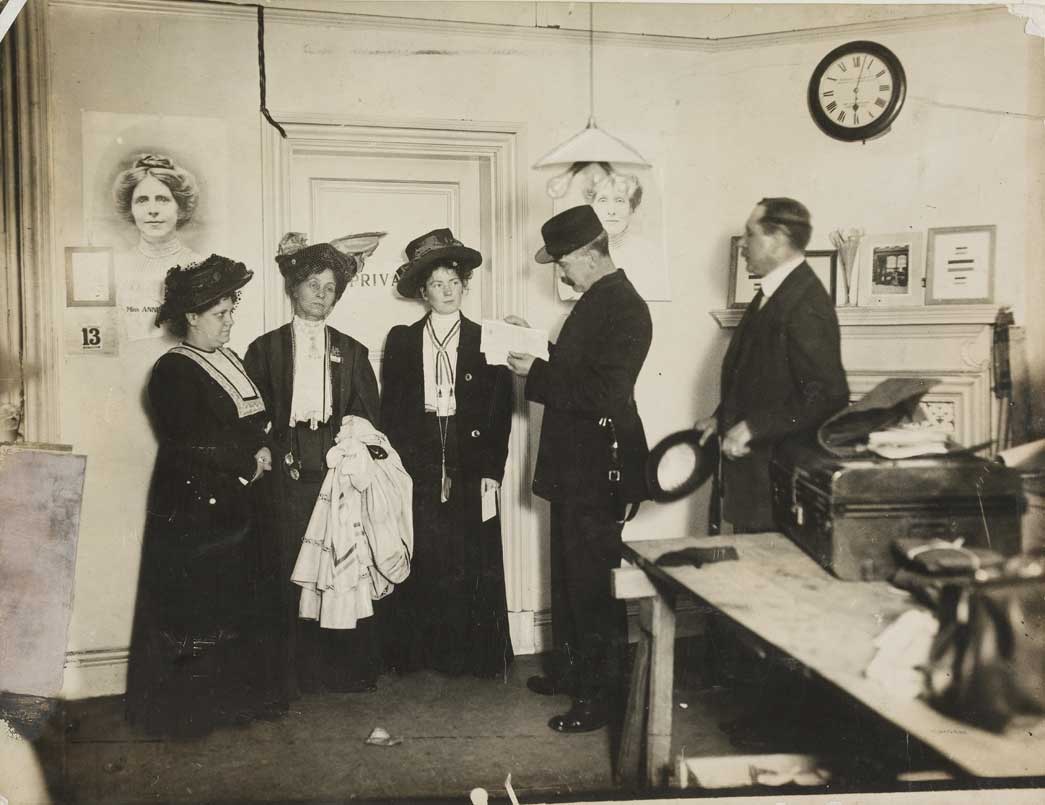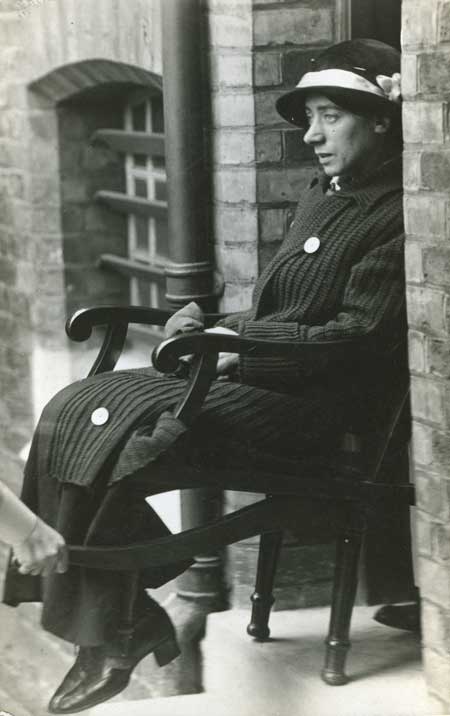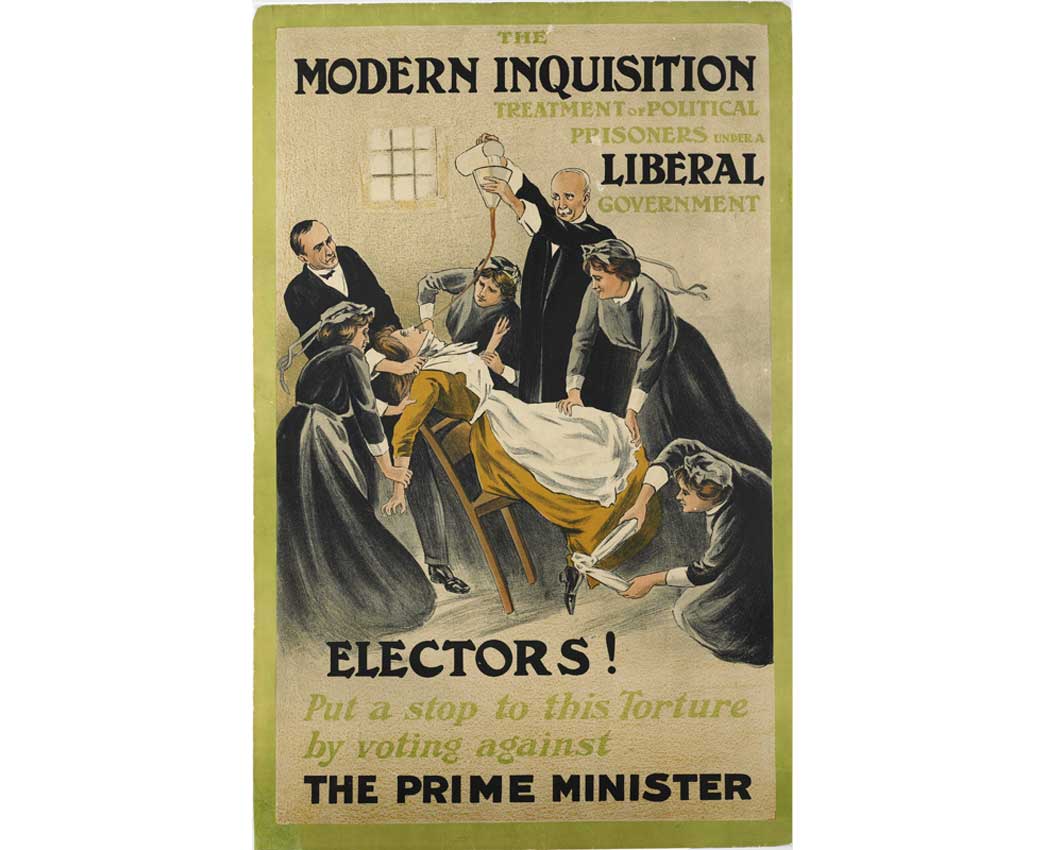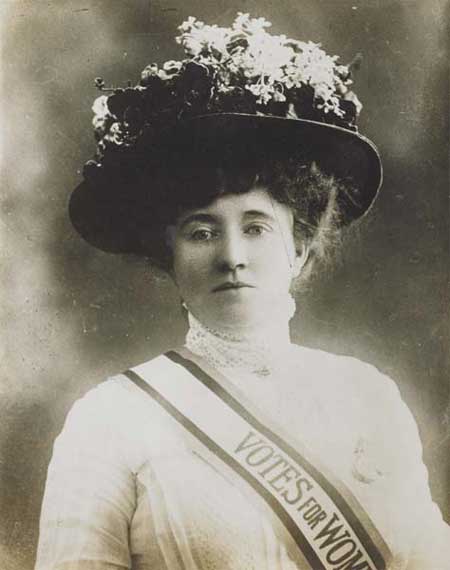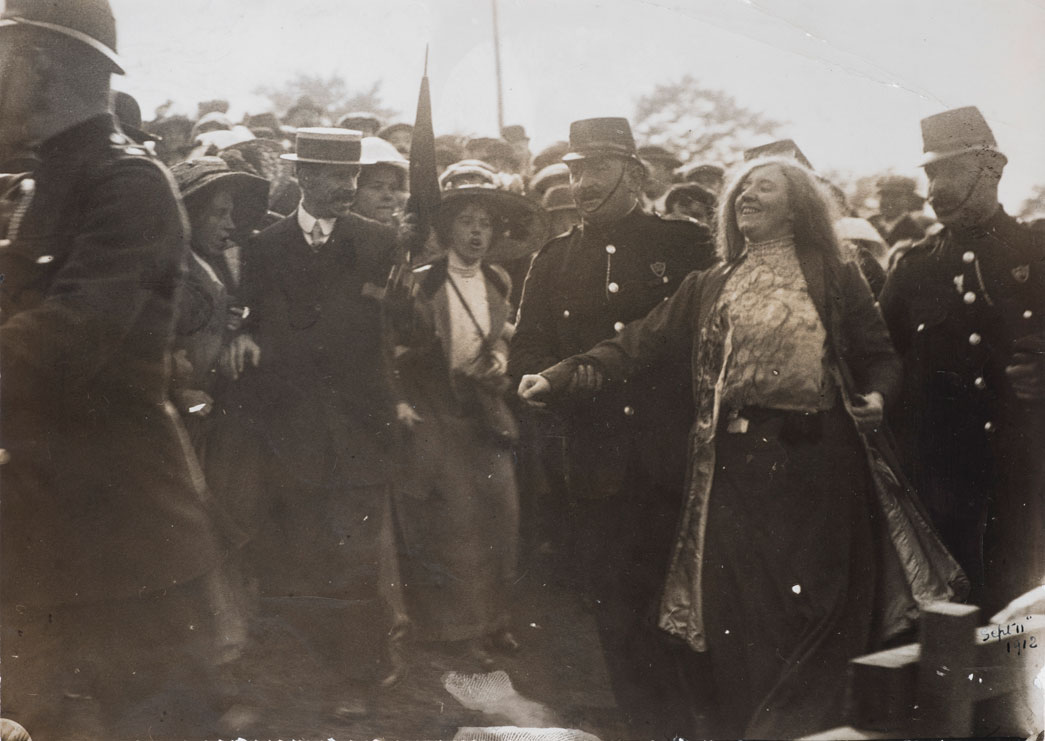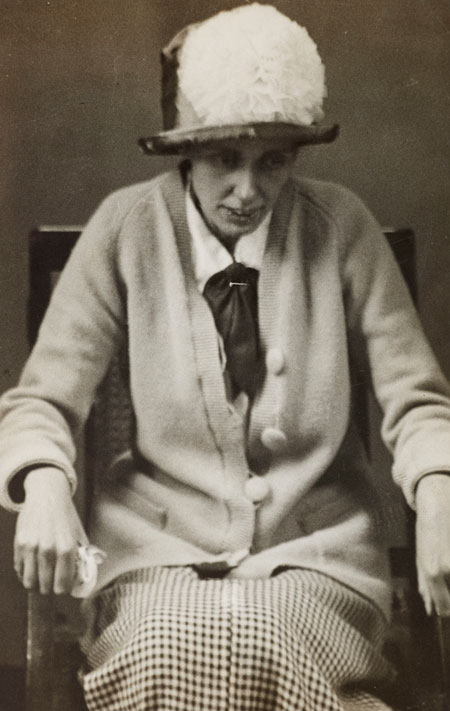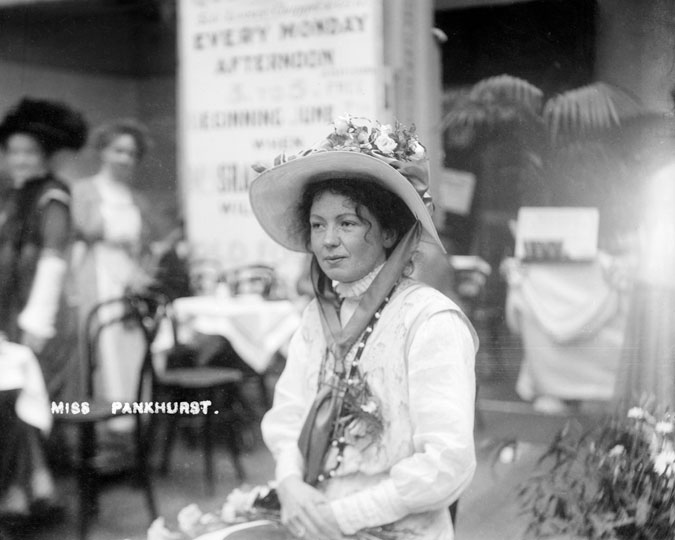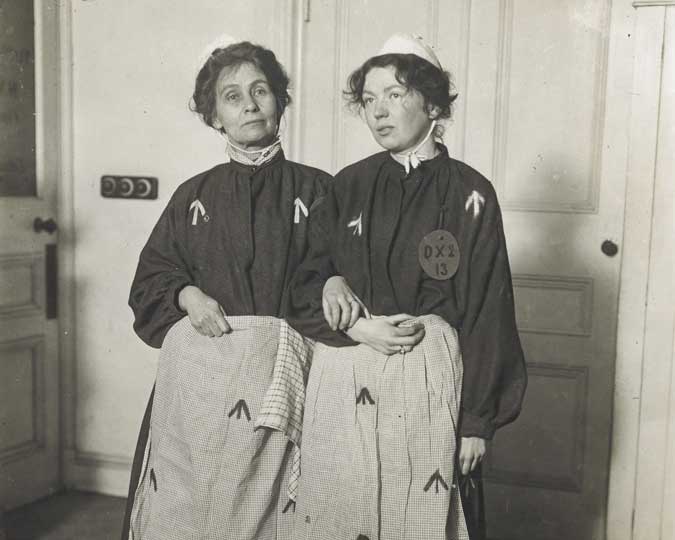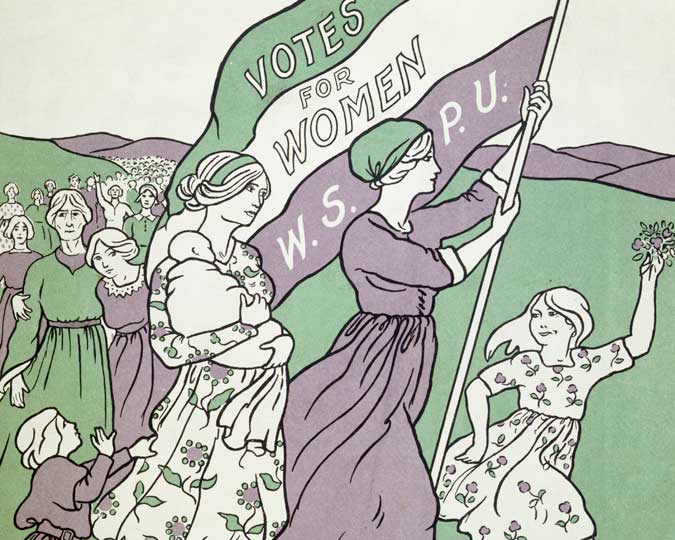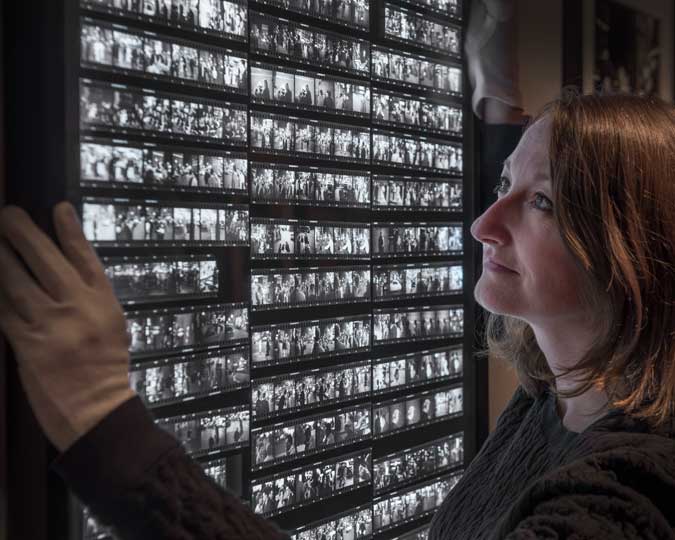31 May is London History Day, and we're celebrating the theme of courage: the courage of the Suffragettes. These pioneers, who fought for Votes for Women a century ago, faced derision, abuse, imprisonment and even death. Curator Beverley Cook highlights four courageous women and the perils they faced.
Everyday abuse
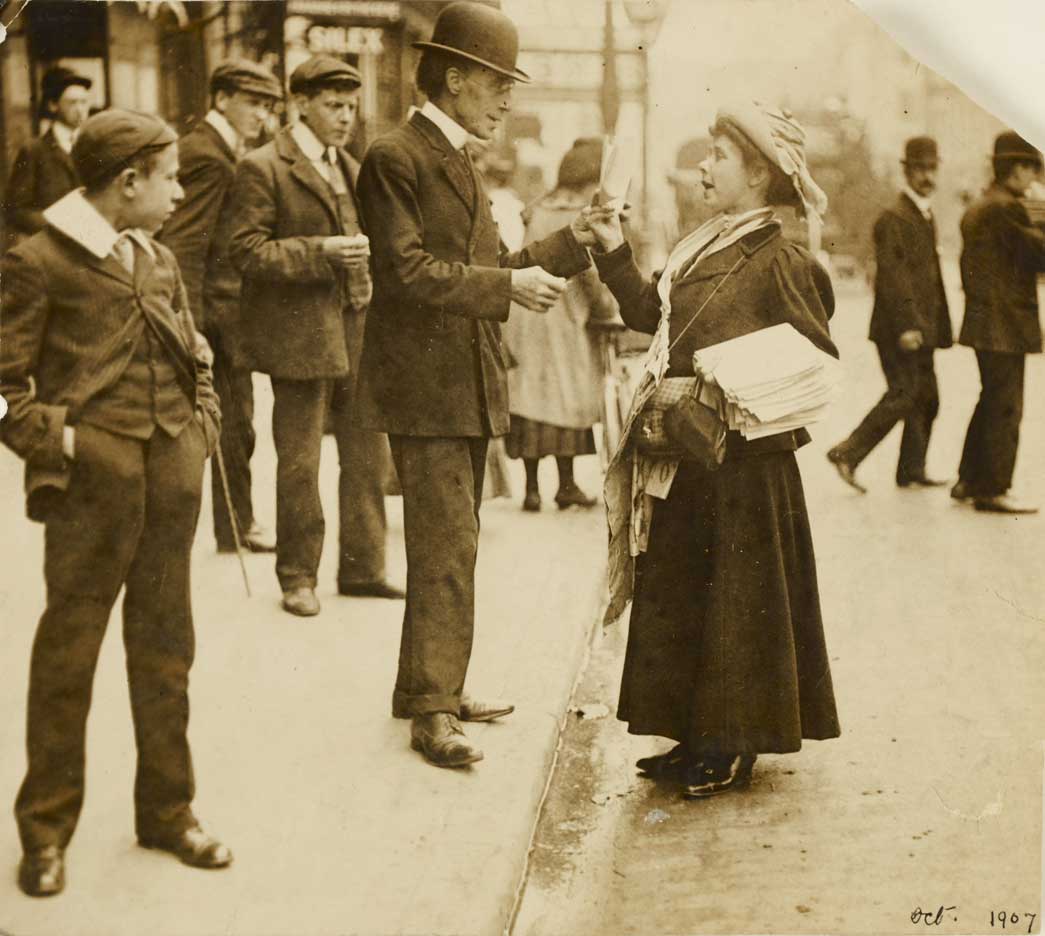
The Suffragette Mary Phillips, selling the Votes for Women newspaper
If the dating on the front of the image is correct Mary is depicted selling the first edition of Votes for Women, first published on 16th October 1907.
To be an ordinary member of the campaign for Votes for Women required personal courage. By taking their campaign to the streets the Women’s Social and Political Union attracted maximum publicity for their cause but also placed their supporters in vulnerable situations. Regular day to day campaign activities - such as selling Suffragette newspapers on street corners, delivering speeches in public spaces, and chalking pavements to announce meetings - were often undertaken by lone women, who experienced verbal and, at times, physical abuse from passers-by. Campaigning Suffragettes had to stand in the gutter, as the police would arrest them for blocking the pavement if given any excuse.
Police surveillance
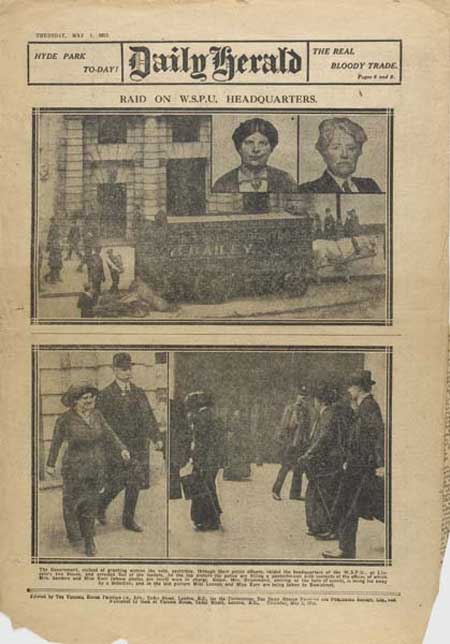
Daily Herald report on the Raid on WSPU Headquarters 1913
Includes three images showing papers being removed from WSPU headquarters at Lincolns Inn.
As Suffragette militancy increased, senior figures in the Women’s Social and Political Union came under increasing surveillance by the police.
Undercover police from the Criminal Investigation Department attended Suffragette meetings, notebook in hand, to record any speeches that could be seen to ‘incite violence.’ These notes were often presented as evidence in conspiracy trials.
Incriminating documents and pamphlets were also seized during police raids of WSPU headquarters.
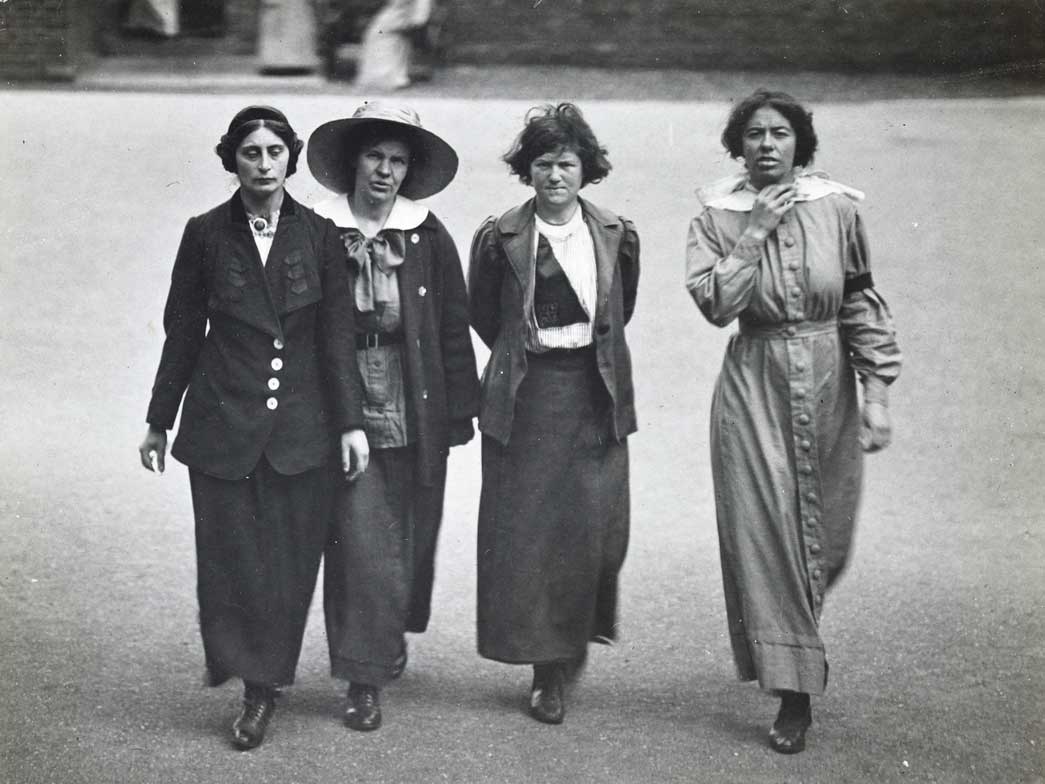
Group of suffragettes taking exercise in the yard of Holloway gaol
The prisoners are identified on the reverse of the photo from left to right as Margaret Scott, Jane Short (the alias used by Rachel Peace) May [Margaret] McFarlane and Olive Hockin.
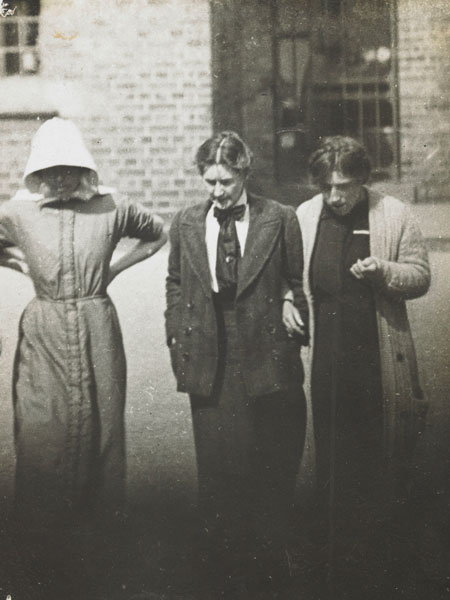
Surveillance photograph of Suffragette prisoners taking exercise in the yard of Holloway Prison
Taken by an undercover photographer working for the Home office.
The most notorious form of surveillance was the undercover photography of Suffragettes, both in public spaces and in prison. From 1913 a photographer, sitting in a van parked in the yard of Holloway prison, undertook covert images of the most hardened and extreme ‘career’ militants who'd been arrested for criminal damage, arson and bombing.
The images were compiled into photographic lists of key suspects, used to try and identify and arrest Suffragettes before they could commit militant acts. This police surveillance was made more challenging because many of the woman used aliases when arrested, giving false names to the police.
As well as being used by the police, the images were also issued to public organisations at risk of Suffragette attack, such as museums and art galleries. Posted in the entrance of public buildings, any woman attempting to enter was compared to the images to prevent a potential incident.
The Museum of London holds over 60 surveillance images of Suffragettes, identified by their grainy quality.
One of the most remarkable aspects of the images is that, in many cases, they depict Suffragettes on hunger-strike, the debilitating effects of which are clearly visible.
The militant careers of these hardcore Suffragettes represent the courage and tenacity of the women, but also reveals why the tactics of ‘direct action’ continue to inspire, shock and divide opinion.
"Death without flinching": hunger strike
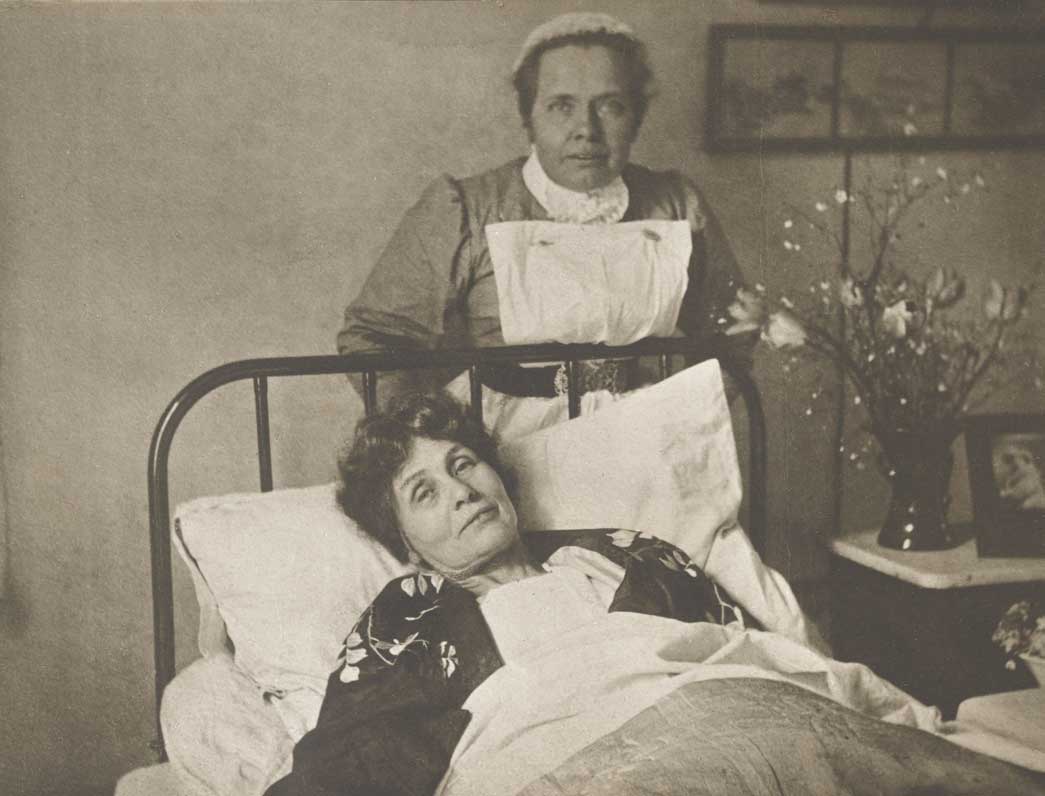
Emmeline Pankhurst recovering from hunger strike, 1913
Emmeline Pankhurst with Nurse Pine on her release from prison and hunger strike.
The Suffragette prisoners’ hunger strike protest remains one of the most poignant and disturbing aspects of the struggle for the vote. Suffragettes refused to eat and often drink while imprisoned, threatening to starve themselves to force a response from the authorities.
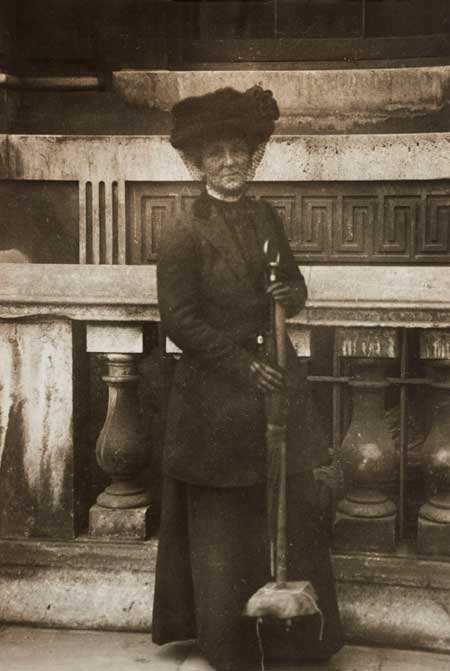
Marion Wallace Dunlop, 1909
The first Suffragette to go on hunger strike
This ultimate form of prison protest did not, however, originate from WSPU headquarters but rather was initially the lone action of the Suffragette, Marion Wallace Dunlop. In 1909 Marion was sent to Holloway on a charge of wilfully and maliciously damaging the stonework of the House of Commons.
Classified as a second division criminal prisoner she went on hunger strike in protest against not being placed in the first division as a political prisoner.
At first, fasting prisoners were released once their health began to suffer. Very soon, however, the authorities decided to introduce force-feeding. This process was agonising and humiliating for the women subjected to it.
The WSPU issued graphic illustrations and descriptions of women struggling and being restrained whilst a tube was forced down their throat or up their nose. These shocking revelations caused considerable public concern at such brutal treatment by the authorities on vulnerable women.
Following Marion’s lead, other Suffragette prisoners quickly adopted the hunger-strike.
Grace Marcon
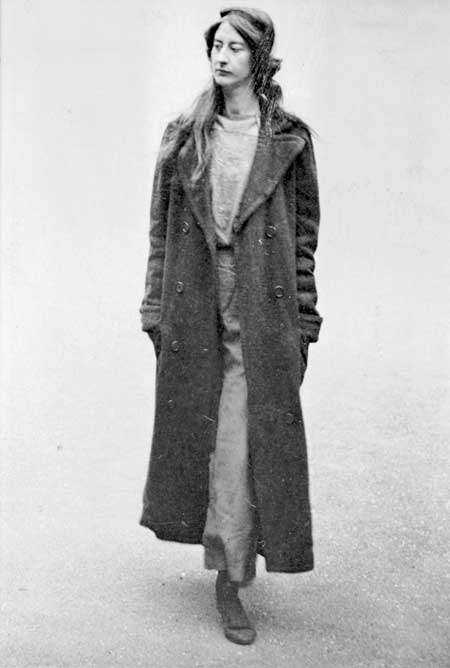
Surveillnace photograph marked with her alias, Frieda Graham.
Grace was the daughter of Canon Marcon of Norwich. In August 1913 she was arrested and charged with obstruction during a scuffle in Whitehall between the police and a group of Suffragettes. This was led by Sylvia Pankhurst, following a demonstration organised by the Free Speech Defence Committee. Although found guilty, Grace did not receive a custodial sentence and was 'bound over' to keep the peace.
Rearrested in October, on a charge of obstruction and assault, Grace did on this occasion receive a sentence of two months in Holloway.
In May 1914, using the alias Frieda Graham, Grace was arrested for damaging five paintings at the National Gallery, including Giovanni Bellini's The Agony in The Garden and Gentile Bellini's Portrait of a Mathematician. Found guilty at trial, she was sentenced to six months' imprisonment.
Released on 5 June, delirious from her hunger strike, she cut off the long hair seen in her surveillance photograph.
Born Katherina Maria Schafer in Germany, Kitty came to England in 1886 at the age of 15 and soon started touring the country in variety theatre. From 1908, when she became a member of the Women’s Social and Political Union and the Actresses' Franchise League, Kitty combined her life as a militant with that of her music hall career as a 'vocal comedienne.'
Kitty was arrested multiple times for militancy, the first in June 1909 for taking part in the WSPU deputation to the House of Commons. She was also sentenced to five terms of imprisonment, her first in October 1909 when she and Dorothy Pethick were sent to prison for throwing a stone at a post office window in Newcastle.
Whilst in prison, Kitty went on hunger strike, was forcibly fed and set fire to her cell. On her release in December she went on to perform in the Christmas pantomime season.
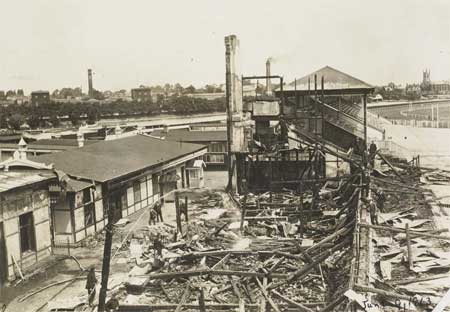
Stands at Hurst Park Racecourse burned by suffragettes
Such attacks, usually carried out at night, achieved maximum publicity without threatening lives.
In March 1912 Kitty took part in the window smashing campaign, using a hammer to smash windows on Regent Street. Because Holloway prison was full, she served a 6 month sentence at Winson Green prison in Birmingham.
In 1913, Kitty and Clare Giveen were found guilty of causing a fire which destroyed the grandstand at Hurst Park racecourse. The fire, which was one of several that Kitty claimed to be involved with, caused over £7000 worth of damage.
It is also assumed Kitty was responsible for the arson attack on the house of Arthur du Cros, the MP for St. Leonard’s in Sussex, as well as other arson attacks in 1913 and 1914.
Olive Wharry
In December 1911 Olive was arrested for taking part in the WSPU window smashing campaign, and sentenced to two months imprisonment for breaking a window at the offices of the Law Land Company. At her trial she declared that she had never broken the law before, but considered it the duty of every 'self-respecting' woman to take part in the protests.
In March 1913, Olive was charged with setting fire to the tea pavilion in Kew Gardens. On arrest she used the alias Joyce Locke. Found guilty of arson, Olive was sentenced to 18 months in the second division, for criminal prisoners.
Imprisoned in Holloway, Olive immediately went on hunger-strike and was released after 32 days under the terms of the Cat & Mouse act weighing just over 5½ stone (36kg). Like many hundreds of Suffragettes, Olive courageously risked her health and life to protest the disenfranchisement of women.








